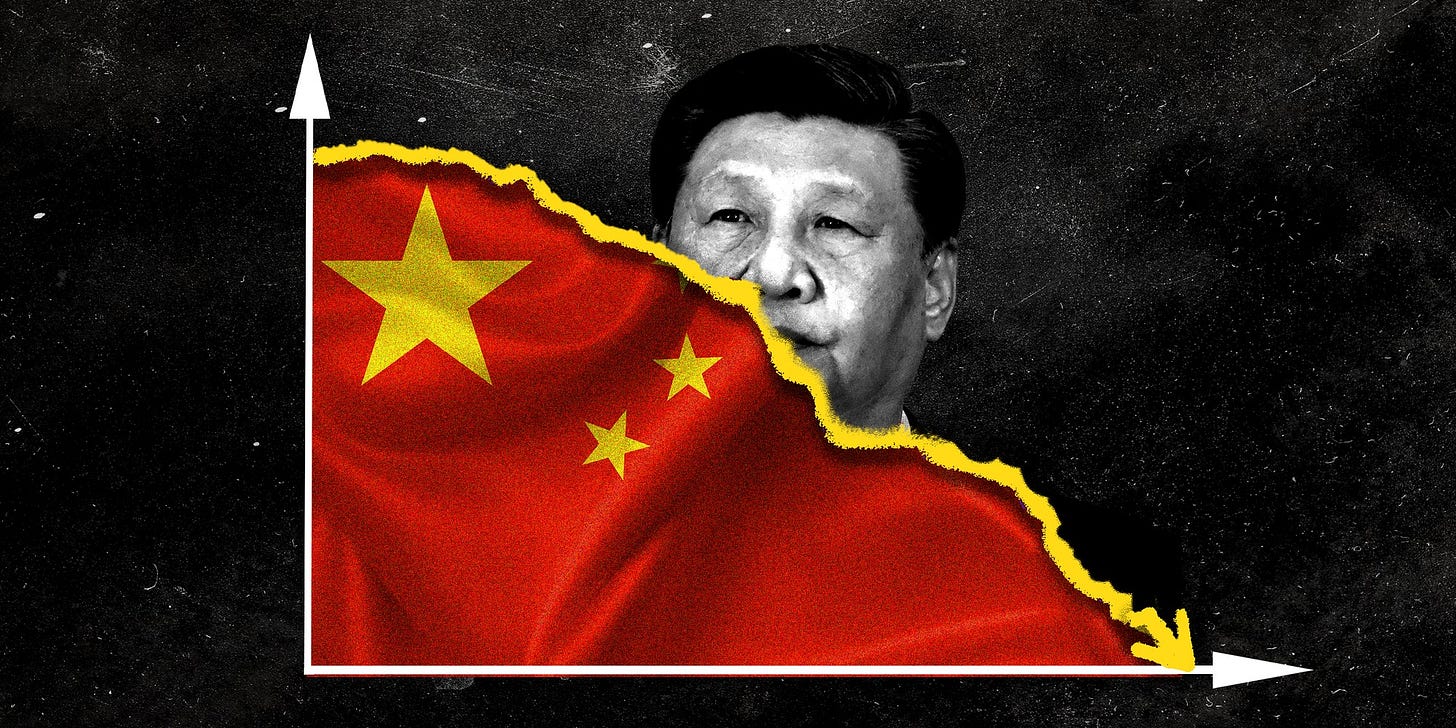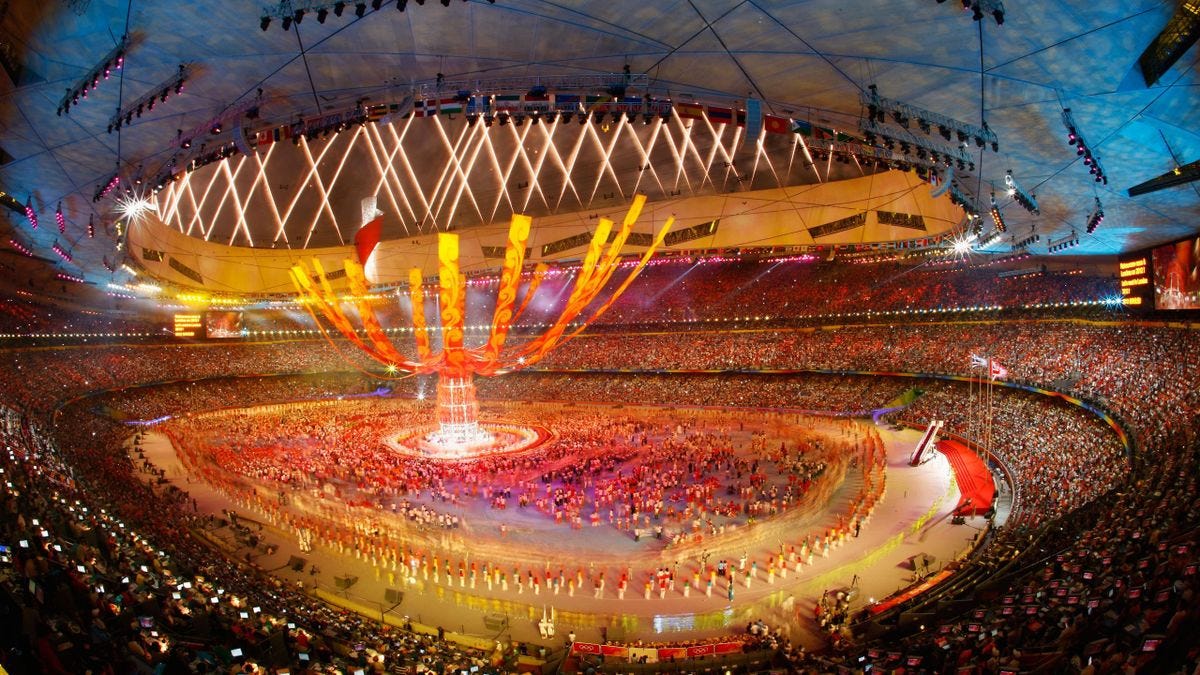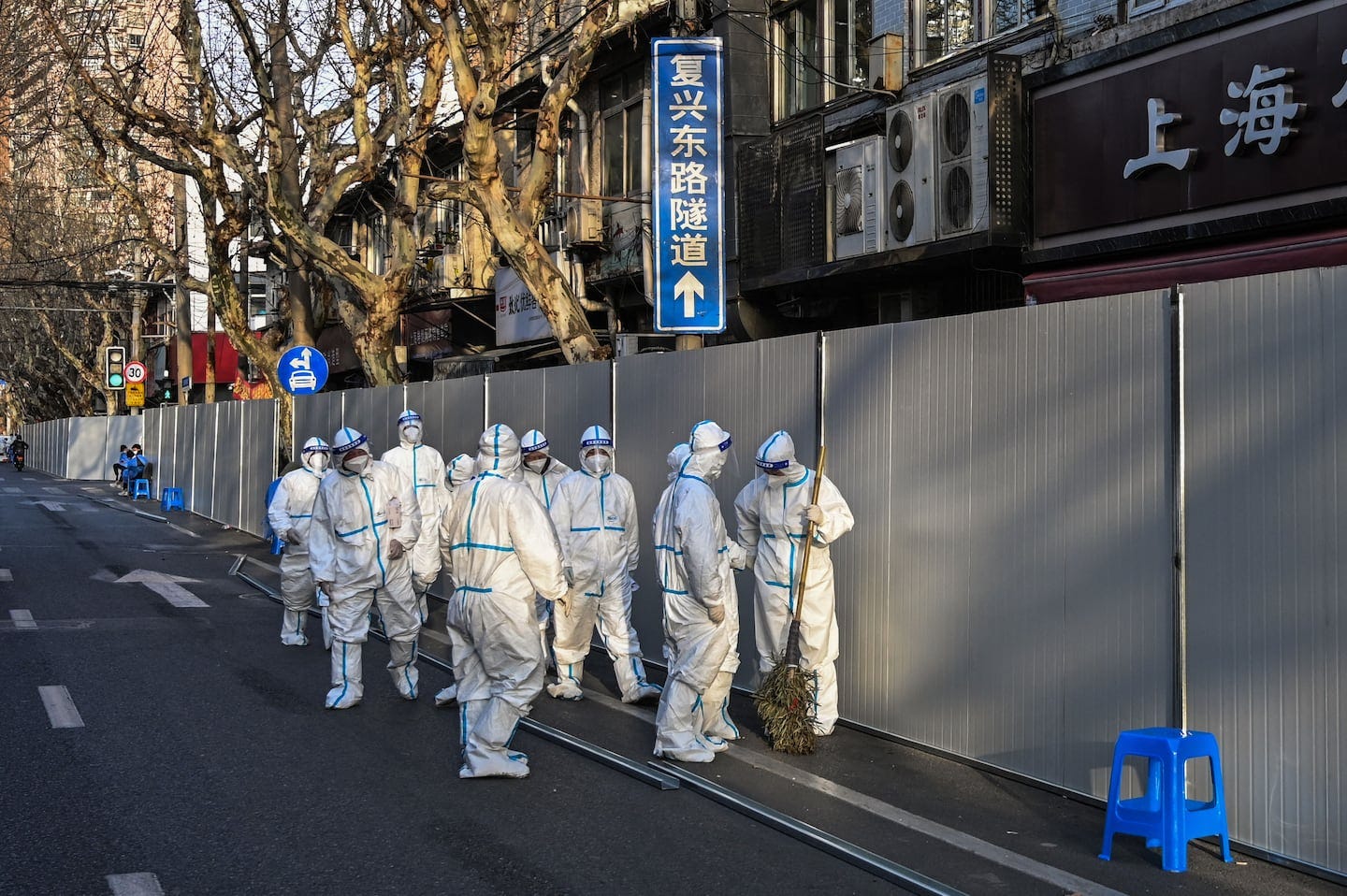The Coming Decline of China – Part 2: A Bubble Made of Debt
Upon taking control of the Communist Party of China in 1978, new paramount leader Deng Xiaoping inherited an economy that was very primitive for an industrialised nation, so set about replacing Maoist class struggle with reform and development. His famous quote of the time when referring to manners of growth was “It doesn’t matter if a cat is black or white, as long as it catches mice.” That might seem very mild, but compared to what the population was used to reading from the late Chairman Mao, bromides such as “The contest of strength is not only a contest of military and economic power, but also a contest of human power and morale”, this was a radical proposition. To illustrate the scale of the task Deng and his politburo had before them, in 1980 China's gross domestic product was estimated at around US$191 billion, or about $195 per capita given the population that year was around 982 million. By comparison, in 1980 Australia's GDP was not that much lower than the PRC's at US$150 billion, with a GDP per capita of $10,200. With Australia's population at the time being 14.7 million citizens, that meant that despite China having 66 times as many people, the Australian economy was 52 times more productive.
And Deng's reforms obviously worked. At the time of his death in 1997 Chinese GDP was approaching US$1 trillion, and GDP per capita was almost US$1000. To return to the above listed benchmark, this was now double the size of the Australian economy, and the difference in productivity had roughly halved. In 2006 the PRC overtook the United Kingdom to become the world's fourth largest economy, the following year Germany, and by 2010 China was finally ahead of Japan, with eyes on the global leader for the past century, the United States. In 2008 China hosted the Summer Olympics, and for those with a knowledge of history, the opening ceremony of the games was illustrative. It celebrated thousands of years of Chinese culture, and showed off the dynamic emerging China of the 21st Century. Missing was anything from recent history; at least before the world's gaze the Century of Humiliation had been banished. The term “rising” was inescapable and dragons replaced Russian bears in the editorial cartoons of western broadsheets. Foreign study of Mandarin increased, although it was also said at the time there were more Chinese learning English as a second language than there were native English speakers.
However just three weeks after the Olympics concluded with a spectacular closing ceremony and China topping the medal table, on the other side of the world, on September 15, Lehman Brothers suddenly collapsed. This was a key moment when the United States' subprime mortgage crisis triggered what became the Global Financial Crisis, which lead to The Great Recession. While there were multiple causes including the subprime mortgage sector in the US, the excessive risk taking by investment banks such as Lehman Brothers was symptomatic of mistakes of the broader financial industry that had spent the previous thirty years deliberately unlearning the lessons of the Great Depression. Governments responded with big stimulus spending in order to compensate for the sudden market contraction, but even with all this additional money to prevent job losses and prop up spending almost every major economy went into recession. China was one of the few that did not, yet the very thing that helped it not only avoid an economic contraction but enjoy another decade of strong growth is now strangling the PRC and will contribute to its decline.
Deng's reforms moved China away from a communist planned economy, but not to western style market capitalism. The state still plays the largest role in the economy, just one that has evolved over time. Private property did not come into existence until the 1980s, and this was done in a uniquely Chinese fashion. Under the PRC's 1988 reforms, land ownership was retained by the central government, but land usage was transferred to regional governments, who could then rezone that land for commercial use and then sell the rights to private or state developers for a profit who in turn sold on the rights to individual homebuyers. This model was, for a time, extremely lucrative for the local governments. However in 1994, a tax overhaul was made which directed the majority of taxation revenue back to the central government, while at the same time the local governments who had just lost much of their income were given strict growth targets while running a budget deficit was made illegal. Thus there was a urgent incentive to increase money made from land use sales. This was the beginning of the Chinese property bubble, and by 2010 such sales was the source of almost 70% of local government revenue.
An economic bubble is where asset prices grow to greatly exceed their intrinsic value. Usually this is only recognised after the bubble has “popped” and prices crash, as both markets and human psychology are conditioned to think prices for a particular good going up is good and a sign you too should invest in order to make money. While there are many causes of bubbles, easy access to credit, lax regulation as well as these seductive narratives of growth and wealth creation. In China, along with tax policy, a key factor is the way people buy real estate. Rather than making a moderate down payment on a property and then borrow the rest from a bank to be repaid with interest, in China buyers have to give a large percentage of the cost directly to the developer, which is used to (partially) fund the cost of construction. China's near total lack of property tax makes investing in housing easy, as once the initial purchase and taxes are paid, no other significant sums are required until the freehold lease runs out (usually 70 years). Chinese banks are also notorious for offering interest rates lower than the rate of inflation, so money in a bank will lose value, making putting that same money into real estate far more attractive.
This created a cycle where local governments need revenue so incentivise developers, who being heavily indebted are relying on the value of the properties they're building increasing, which in turn become not only housing but the life savings of the people who have paid for them in advance. And when, according to an IMF estimate, 20% of China's total economic activity is related to real estate (thought to be close to 30% at the peak of the bubble), this sector became a political as much as economic problem for the government. The economy of the People's Republic is still largely dictated by Five-Year Plans decided on by the Central Committee of the Chinese Communist Party, and so the decisions made are often more political than economic. And since infrastructure spending has been the path to fast growth over the past several decades, the CCP, trying to move to new forms of production and consumption will be the work of the next few decades, which will be greatly affected by the decisions of the recent past. This is how China ended up with its infamous ghost cities, that exist as monuments to a failed economic policy. Today there are an estimated 60 million empty apartments in China, more than the entire population of France.
The first name everyone thinks of when the Chinese property bubble is mentioned is the mega developer Evergrande. Founded early in the boom period in 1996 by Hui Ka Yan, the company rose to own more than 1300 projects across China, with Mr. Hui's personal fortune reaching $42 billion at its peak. But Evergrande was also around $300 billion in debt by 2020, the year that the CCP, alarmed at the fact the estimate the total value of China's property at the peak of the bubble was US$60 trillion (making it the biggest asset class in the world), finally decided to intervene. This was the the Three Red Lines policy, which attempted to impose controls on the sector. However this led to risks of these over-leveraged companies collapsing, and taking with them the savings invested by millions of Chinese families, along with associated construction firms and materials suppliers and all their employees. Such a collapse would also affect the banking and lending sector, potentially leading to a credit crunch. And while Evergrande as the biggest and most indebted company got most of the attention, there were many other developers were in an equally precarious position.
Another key aspect of China's Five-Year plans has been state investment in production. From the 1980s to the 2000s this was the key driver of economic growth. However in the last fifteen years this has resulted in massive industrial overcapacity, with more produced than both domestic and foreign markets can consume. In government-designated priority sectors, factories not only make products that have to be sold below cost to satisfy political goals, even the production targets for many of these goods continue to be raised as the CCP's economic vision and thus plans still focus on increasing industrial capacity. And there's a closed cycle to this, as embedding the Party's directions and hierarchy into ever sector of the economy reinforces political stability....only at the expense of the efficiency that would come with a freer market. But this way business is tightly bound and subservient to the interests of the Party. As Zongyuan Zoe Liu puts it, China's economy risks falling into a “doom loop” where the debts incurred by regional governments to build this industrial base could lead to factory closures and job losses, with the only survivors being not the most efficient or profitable businesses but the most politically connected.
When the 2008 economic crisis hit, Beijing announced a massive stimulus of US$586 billion, or 12% of China's GDP. However the majority of this money was funded by local governments rather than the central government as it was in other countries, and a majority of the stimulus funding was directed to state-owned enterprises, which are typically less productive than privately owned businesses. This increased the debt burden on local governments, forcing them to try and extract even more value out of land sales given that the 1994 reform directed most of the tax revenue to the central government, further inflating the housing bubble. In mid 2024 President Xi Jinping finally attempted to do something about China's debt, which is likely to get close to $30 trillion by the end of the decade, and announced a US$1.4 trillion bailout of local governments as well as a new tax sharing system, to try and deal with regional government debt....by increasing national debt through borrowing. This was also necessary as under the new Three Red Lines policy the only real source of revenue for the regions had collapsed, even if this did finally begin to bring real estate prices down.
These problems have been known about for years, yet as China continued to enjoy strong growth they generally weren't considered crises. However the COVID-19 pandemic and the CCP's long and harsh lockdown of the country resulted in severe downturns in production and consumption as economic growth took a major hit. 2020-21 also coincided with the popping of the property bubble (taking with it a lot of people's investments and savings) as well as China hitting its peak population which has now begun to fall. There was also the consolidation of political power by Communist Party general secretary Xi Jinping. He ran for an unprecedented third time as Chinese leader in 2022, stacked the Politburo with loyalists and enshrined his own “Xi Jinping Thought” into Party and state ideology. This will mean that few course corrections will be made, dissent will be punished and that the Party values its own survival over the long term sustainability of the economy. At the same time both foreign capital and high net worth individuals are leaving the PRC. In the two decades before the pandemic, money flowed into China, but nowadays it seems foreigners as well as Chinese have little optimism about the future of the country.
As detailed in part one, a significant and growing drag on that debt-laden state budget is ageing China's ever growing healthcare costs, combined with a shrinking percentage of increasingly older people in the workforce. And despite the wealth evident in its glittering major cities and talk of trillions of dollars, even compared to its North Asian neighbours facing the same demographic challenges, on the whole China is not actually that rich. The world's second largest economy is still classed as developing country, and in terms of GDP per capita is only ranked 70th in the world, just ahead of Argentina but behind Cuba. This figure is around US$12,500 a year, whereas in South Korea and Japan it is closer to $35,000 a year, so those governments are better able to levy taxes in order to pay for pensions and healthcare to support their ageing population in ways the Communist Party cannot. Yet as long as Xi Jinping retains near total control, it is unlikely that the Party will make the sort of changes required to move China away from a reliance on production and to build an economy that reflects the needs its people. As recently as 2019 the expectation was that soon China would overtake the United States to become the world's largest economy. Few analysts are still predicting this.






